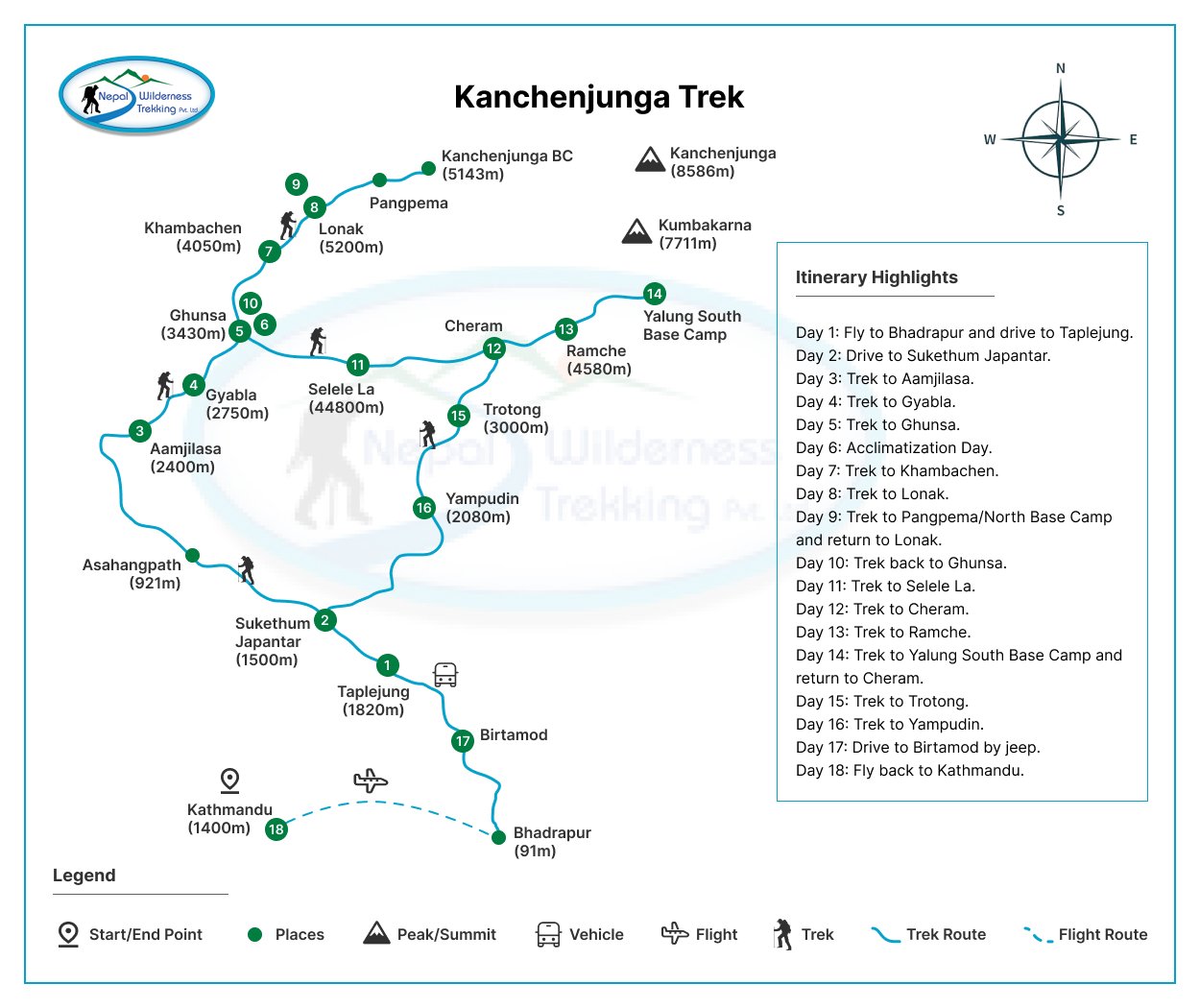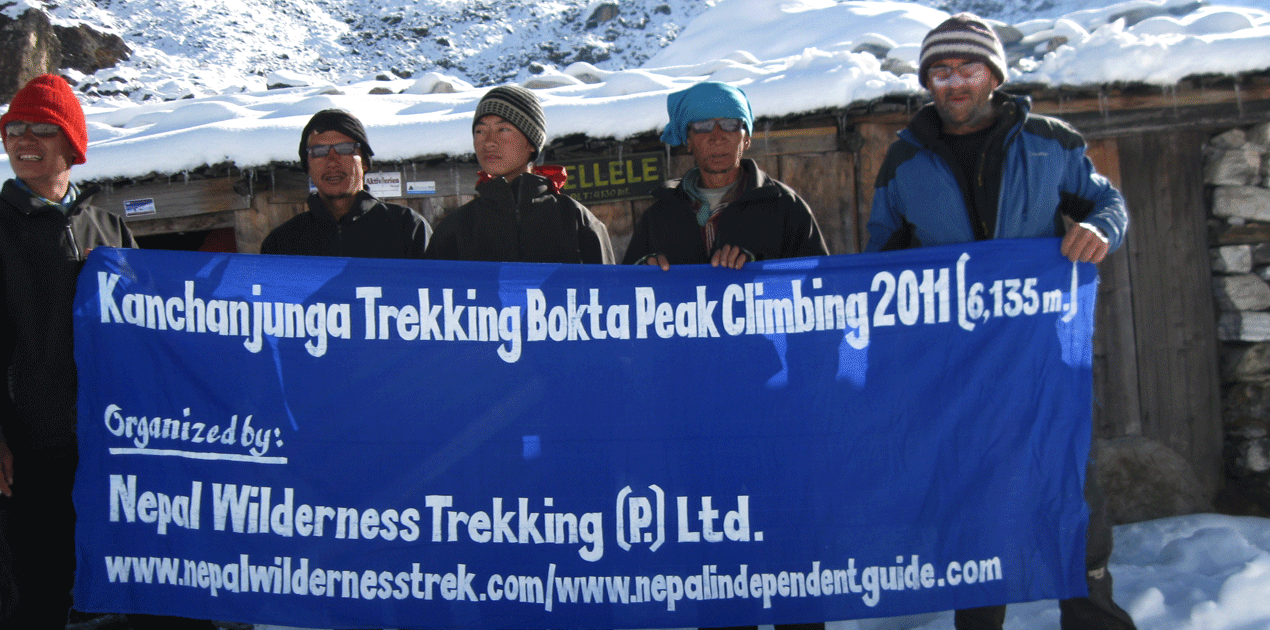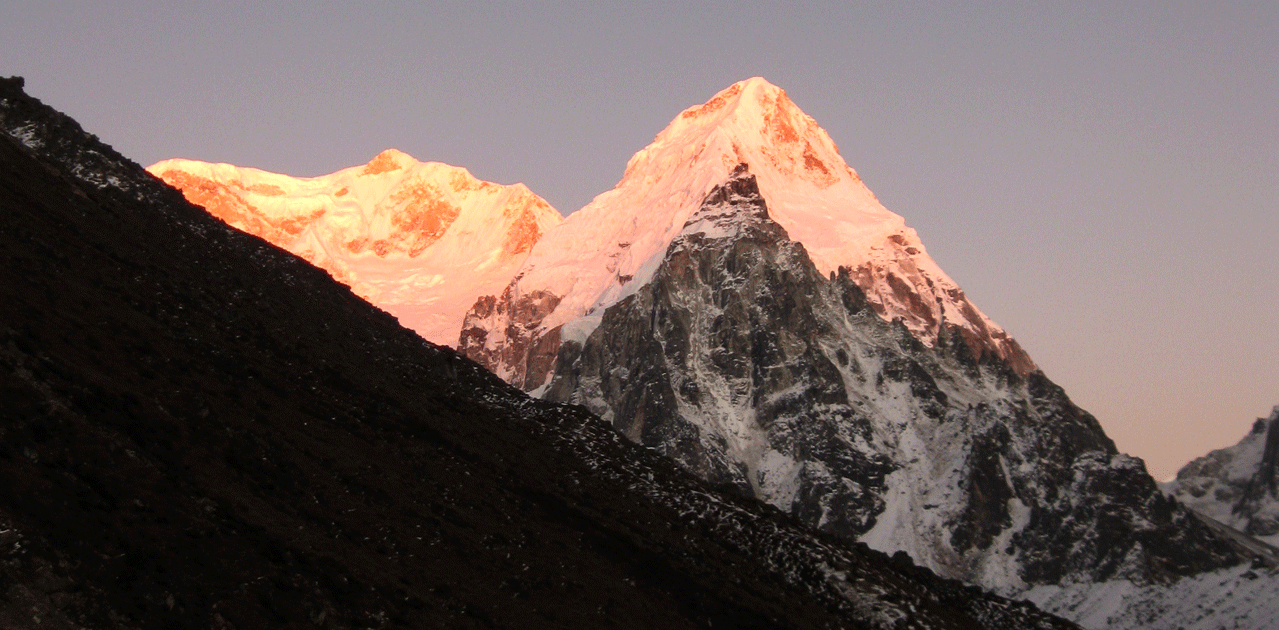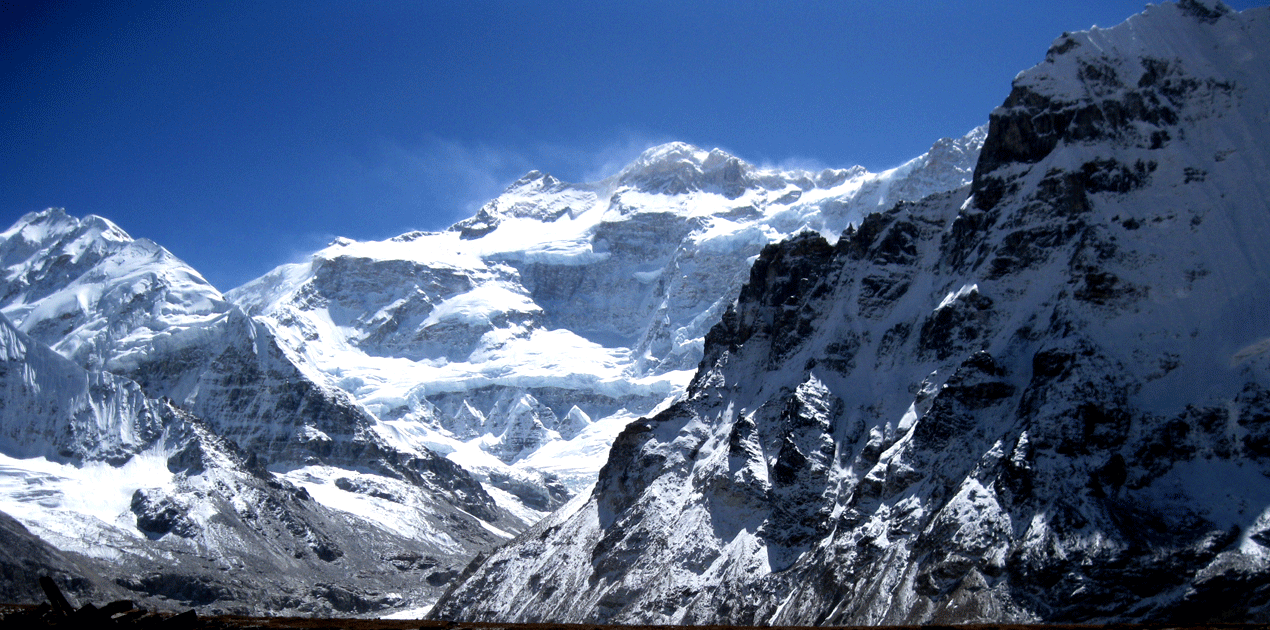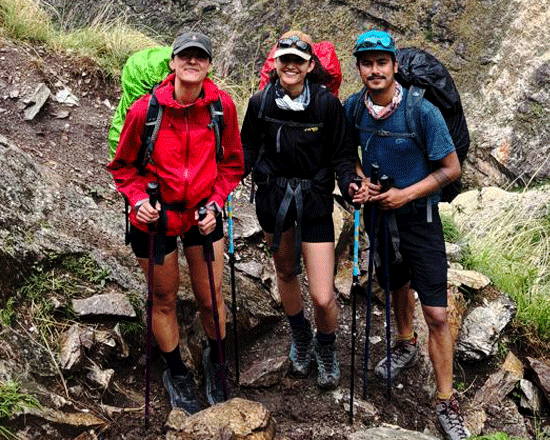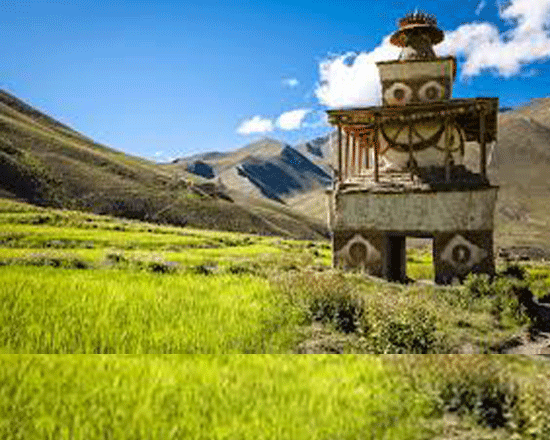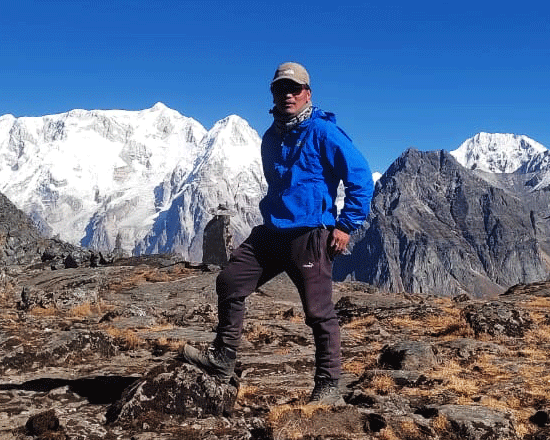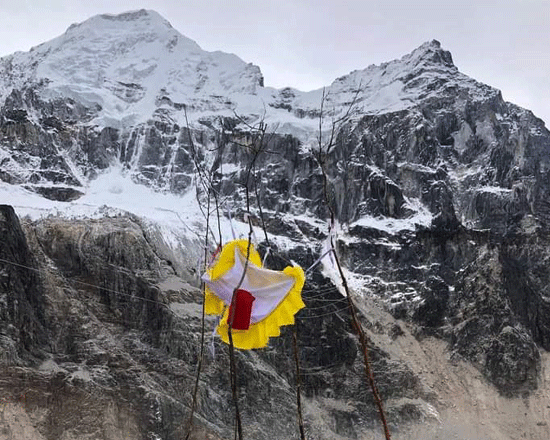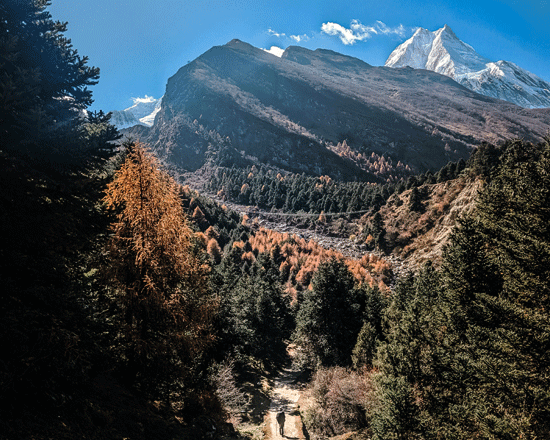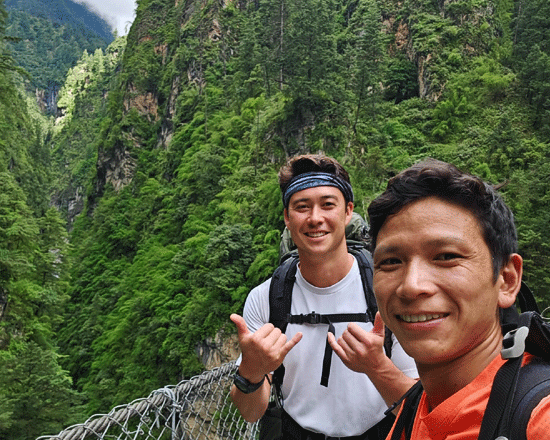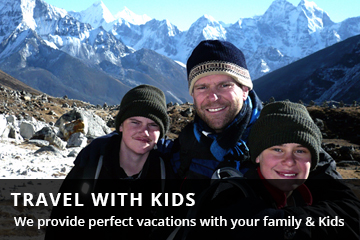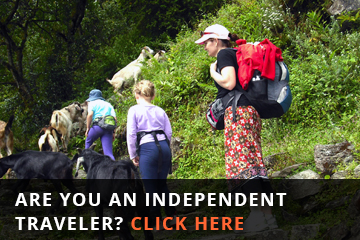Kanchenjunga Trek
Kanchenjunga Trek
Wilderness TrekkingTrip Facts
Since the terrain can be hard and the days long, hikers on these treks should be in good physical condition and have some previous mountain walking experience. Steep climbing may be involved, although it is never necessary to use ropes. Treks at this level can he arranged for periods of 16 to 21 days. Typically, a gradual ascent through a green river valley will lead you up to a number of high passes, where you will reach the altitude of 5416m. Often times, you will get a close insight into the Tibetan culture. Participants should expect to trek above 5416m/17872ft.
Mode of Travel : Flight/Land100%
Overview
Exploring Kanchenjunga Trek 17 days package itinerary
The Kanchenjunga Trek in Eastern Nepal offers trekkers an unparalleled adventure, delving into the heart of the Himalayas. This trek is renowned for its stunning landscapes, rich biodiversity, and deep cultural heritage. Let’s explore the essential aspects of this remarkable journey, including the trekking routes, preparation tips, and artistic experiences along the way.
Overview of Kanchenjunga trek
Kanchenjunga Himal stands tall at 8,586 meters (28,169 feet) and is the third-highest peak in the world. It is located in the Taplejung district of Eastern Nepal, within the Kanchenjunga Conservation Area. This region is a sanctuary of diverse ecosystems, ranging from subtropical forests to alpine meadows, the best trek making it a haven for wildlife and trekkers.
Kanchenjunga Trek Routes and Itinerary
The Kanchenjunga Base Camp Trek is a popular route that leads trekkers to the base camps on the north and south sides of the Kanchenjunga Trek. Starting from Taplejung or Suketar, trekkers embark on a journey through lush forests of rhododendron and bamboo. The Kanchenjunga trek ascends gradually, offering glimpses of stunning landscapes and local villages along the trekking trails. The trekking journey to the South Base Camp at 4,200 meters (13,780 feet) and the North Base Camp at 5,160 meters (16,929 feet) is challenging but rewarding, providing trekkers with breathtaking views of Kanchenjunga’s majestic peaks.
Kanchenjunga Circuit Trek
The Kanchenjunga Circuit Trek is a comprehensive route that circumnavigates the entire Kanchenjunga massif. It is ideal for those seeking an extensive exploration of the Taplejung region. Trekkers traverse remote villages, high-altitude passes, and glacial valleys. The Kanchenjunga circuit trek offers a diverse experience, combining the scenic beauty of the Himalayas with cultural insights into the local Sherpa communities. This route typically spans 10 to 20 days, requiring good fitness and stamina.
Altitude and Physical Preparation
The Kanchenjunga Trek features high altitudes, with the Kanchenjunga Base Camp reaching around 5,160 meters (16,929 feet). Proper altitude preparation is essential to ensure trekkers acclimatize effectively and minimize the risk of altitude sickness. Trekkers should participate in pre-trek physical conditioning, which includes cardiovascular exercises and strength training. This preparation enables trekkers to manage the physical challenges of the trek and experience the journey safely.
Wildlife and Flora of Kanchenjunga Circuit trek
The Kanchenjunga Conservation Area is celebrated for its rich biodiversity, providing a refuge for numerous rare and endangered species. Trekkers may encounter elusive wildlife such as the snow leopard, red panda, and Himalayan black bear in dense forests and alpine meadows. The region hosts over 2,000 plant species, including vibrant rhododendrons, magnolias, and orchids. During spring, the landscape transforms into a kaleidoscope of colors with rhododendrons blooming in shades of red, pink, and white, creating a breathtaking spectacle against the backdrop of snow-capped peaks.
The Kanchenjunga circuit trek, Gateway to the Great Himalayan Trail, and Home of the Red Panda
Sherpa Community and Culture in Kanchenjunga Trek
Best Time for Kanchenjunga Circuit Trek
The ideal times for the Kanchenjunga Trek are during the pre-monsoon (March to May) and post-monsoon (September to November) seasons. During these periods, the weather is generally stable, with clear skies and moderate temperatures, making it perfect for trekking. The spring season is especially beautiful, with rhododendrons in full bloom, adding vibrant colors to the landscape. The post-monsoon period also offers clear views and pleasant temperatures, ideal for trekking and photography.
Permit and Cost for Kanchenjunga Circuit Trek
Before embarking on the Kanchenjunga Trek, trekkers must obtain the necessary trekking permits, including the Kanchenjunga Conservation Area Entry Permit and the Restricted Area Permit. These permits are essential for entering the restricted zones and trekking in the conservation area. The cost of these permits varies depending on the duration of the trek and the services chosen. Additionally, trekkers should budget for accommodations, meals, guides, and porters. Trekking gear such as insulated clothing, sturdy hiking boots, trekking poles, and a reliable sleeping bag are also necessary for a comfortable journey.
Kanchenjunga Trek Difficulty
The Kanchenjunga Trek is considered challenging due to its rugged terrain, high altitudes, and variable weather conditions. Trekkers should be prepared for long days of hiking, steep ascents, and potential weather changes, including snowfall at higher elevations. Proper trekking gear and equipment are essential. Trekkers should ensure they have adequate clothing for varying temperatures, sturdy boots, trekking poles, and a good quality backpack. Hiring experienced trekking guides and porters is recommended to enhance safety and comfort throughout the trek.
Kanchenjunga circuit trek trails
Kanchenjunga trek conclusion
Detail Itinerary
Day 01: Kathmandu to Bhadrapur to Taplejung (1,820 m)
Fly from Kathmandu to Bhadrapur (45 minutes) and drive to Taplejung by private jeep (8-9 hours). Taplejung, located in the eastern region of Nepal, is a cultural hub with a mix of Limbu and Rai communities who follow a blend of Hinduism, Buddhism, and animistic traditions. The region is famous for cardamom farming and offers stunning views of the Himalayan foothills. Overnight stay at a lodge in Taplejung.
Day 02: Taplejung to Sekathum (1,500 m) to Aamjilasa (2,400 m)
After breakfast, drive to Sekathum via a 3-4 hour mountain journey in a shared jeep. Begin a scenic trek to Aamjilasa (4-5 hours). Along the trail, you will pass through dense forests of rhododendrons, bamboo, and cardamom fields. The local culture is influenced by Tibetan Buddhism, and you might encounter prayer flags and chortens. Overnight stay at a lodge in Aamjilasa.
Day 03: Aamjilasa to Gyabla (2,750 m)
Trek from Aamjilasa to Gyabla (5-6 hours), traversing alpine forests and crossing suspension bridges over the Ghunsa River. Gyabla is a small Tibetan-influenced settlement where you can experience local hospitality. You may spot red pandas, Himalayan thar, and various bird species along the route. Overnight stay at a lodge.
Day 04: Gyabla to Ghunsa (3,430 m)
Hike from Gyabla to Ghunsa (4-5 hours), a picturesque village with wooden houses and terraced fields. Ghunsa is a significant stop on the trek, with a rich Buddhist culture visible in the monastery and prayer wheels. The people here are mainly of Tibetan descent and are engaged in yak herding and trade. Overnight stay at a lodge.
Day 05: Acclimatization Day in Ghunsa
Spend the day acclimatizing in Ghunsa. You can take an optional side trip to nearby viewpoints or visit the Ghunsa Monastery. Acclimatization is crucial to prevent altitude sickness as you ascend higher. Explore the yak pastures and enjoy panoramic mountain views. Overnight stay at a lodge.
Day 06: Ghunsa to Khambachen (4,050 m)
Trek from Ghunsa to Khambachen (5-6 hours), passing through larch and juniper forests. The trail provides breathtaking views of Jannu Peak (7,710 m). This high-altitude village is surrounded by towering peaks and glacial moraines. Overnight stay at a lodge.
Day 07: Rest Day in Khambachen - Visit Jannu Base Camp
Take a rest day for further acclimatization and explore Jannu Base Camp (approximately 6 hours round trip). This side trip offers stunning views of the Jannu Glacier and surrounding peaks. Khambachen is home to Tibetan-speaking people who follow Buddhist traditions. Overnight stay at the same lodge.
Day 08: Khambachen to Lonak (4,800 m)
Continue your trek from Khambachen to Lonak (5-6 hours) along a rugged trail across glacial landscapes. The flora becomes sparse, with mosses and lichens dominating the rocky terrain. The thin air and dramatic mountain vistas make this a challenging but rewarding section. Overnight stay at a lodge.
Day 09: Lonak to Pangpema/North Base Camp and Return to Khambachen
Hike to Pangpema, the North Base Camp of Kanchenjunga (5,143 m), and return to Khambachen (8-9 hours total). This point offers a panoramic view of Kanchenjunga, the third-highest peak in the world (8,586 m). Return along the same trail to Khambachen for an overnight stay.
Day 10: Khambachen to Ghunsa (3,430 m)
Descend from Khambachen to Ghunsa (5-6 hours) through alpine meadows and forests. The return journey allows for more interaction with local villagers and the chance to observe traditional lifestyles. Overnight stay at a lodge.
Day 11: Ghunsa to Selele Camp (4,480 m)
Ascend to Selele Camp (5-6 hours) through rhododendron and pine forests. This is a remote section of the trail with stunning views of Makalu and Everest on clear days. Overnight stay at a lodge.
Day 12: Selele Camp to Tseram via Mrigen-La & Sinen-La (4,646 m)
Cross the high passes of Mrigen-La and Sinen-La (7-8 hours) to reach Tseram. The challenging hike is rewarded with spectacular views of the Kanchenjunga range. Tseram lies near the Yalung Glacier and is an essential stop for trekkers. Overnight stay at a lodge.
Day 13: Tseram to Oktang Viewpoint (4,900 m) and Back to Tseram
Trek to the Oktang viewpoint (6-7 hours round trip) for a closer view of the South Face of Kanchenjunga and Yalung Glacier. This sacred area is significant for both Buddhists and Hindus. Return to Tseram for an overnight stay.
Day 14: Tseram to Yarsang (1,800 m)
Descend to Yarsang (6-7 hours), moving through dense forests and lush vegetation. The trail offers birdwatching opportunities and cultural encounters with local communities. Overnight stay at a lodge.
Day 15: Yarsang to Helok (1,600 m) and Drive to Taplejung
Trek to Helok (3-4 hours) and drive to Taplejung (4-5 hours by shared jeep). Celebrate the successful completion of your trek in this vibrant town. Overnight stay at a lodge in Taplejung.
Day 16: Taplejung to Birtamod
Drive to Birtamod by shared jeep (approximately 7-8 hours). Birtamod is a bustling commercial hub in eastern Nepal where you can experience the diverse cultural fabric of the Terai region. Overnight stay in Birtamod.
Day 17: Birtamod to Kathmandu
Fly back to Kathmandu from Bhadrapur (45-minute flight) and transfer to your hotel. Reflect on your unforgettable Kanchenjunga adventure.
Cost Included
- Your hotel to the domestic airport, and hotel transfers by car.
- Roundtrip flight tickets from Kathmandu to Bhadrapur and back to Kathmandu.
- Private Jeep from Bhadrapur to Taplejung, and shared Jeep from Taplejung to Sukethum. (if 2 to 4 or more pax then we provide you private jeep)
- Share Jeep transportation from Helok to Taplejung and Taplejung and Bhatrapur. (if 2 to 4 or more pax then we provide you private jeep)
- Lodge accommodation during the trek.
- Three meals a day (Breakfast, lunch, and dinner).
- Kanchenjunga special entrance permits.
- National park permit
- Experienced English-speaking trekking guide licensed by the government and familiar with the area.
- One porter for every two to three participants. (Note: An additional cost applies for solo clients requiring a porter).
- Microspikes for trekking from December to February.
- Kit bag for storing belongings.
- Sleeping bag suitable for a comfortable night's sleep on a trek in temperatures as low as minus 25 degrees Celsius.
- Guide's porter, including food, lodge, air/bus transportation, salary, insurance, equipment, etc.
- Necessary paperwork, including all government and local taxes.
- A certificate of appreciation from Nepal Wilderness Trekking after a successful trek.
Cost Excluded
- Airfare for international flights.
- Upon arrival at Tribhuvan International Airport, Nepal entry visa fees vary by duration (15 days - $25-30, 30 days - $40-50, etc.).
- Hotel accommodation in Kathmandu.
- Personal equipment, suitable for high and cold temperatures.
- a porter wage for solo USD25 per day
- Emergency high-altitude rescue and evacuation coverage is provided by travel insurance.
- All beverages including soft drinks, caffeinated drinks such as coke, beer, etc.
- Drinking water/mineral water, dessert, laundry services.
- Tip for guide and porter.
- Excluded are all costs and expenses not listed under "cost includes."
- Inclusion of costs or delays beyond the control of the management, such as landslides, weather conditions, itinerary modifications due to safety concerns, illness, changes in government policies, strikes, etc.
| Trip Dates | Trip Price | Confirmed Pax | Trip Status | |
|---|---|---|---|---|
| October 1, 2025 | US$ 1700 | Join a Group | Book Now | |
| October 5, 2025 | US$ 1700 | Join a Group | Book Now | |
| October 10, 2025 | US$ 1700 | Join a Group | Book Now | |
| October 15, 2025 | US$ 1700 | Join a Group | Book Now | |
| October 20, 2025 | US$ 1700 | Join a Group | Book Now | |
| October 24, 2025 | US$ 1700 | Join a Group | Book Now | |
| October 28, 2025 | US$ 1700 | Join a Group | Book Now | |
| October 31, 2025 | US$ 1700 | Join a Group | Book Now | |
| November 1, 2025 | US$ 1700 | Join a Group | Book Now | |
| November 5, 2025 | US$ 1700 | Join a Group | Book Now | |
| November 10, 2025 | US$ 1700 | Join a Group | Book Now | |
| November 14, 2025 | US$ 1700 | Join a Group | Book Now | |
| November 18, 2025 | US$ 1700 | Join a Group | Book Now | |
| November 22, 2025 | US$ 1700 | Join a Group | Book Now | |
| November 28, 2025 | US$ 1700 | Join a Group | Book Now | |
| November 30, 2025 | US$ 1700 | Join a Group | Book Now |
Trip Map
